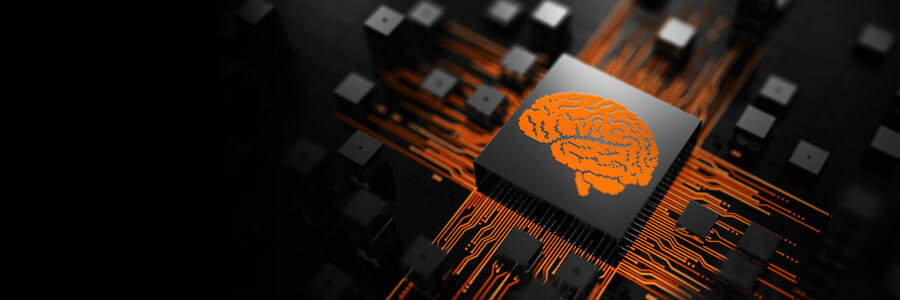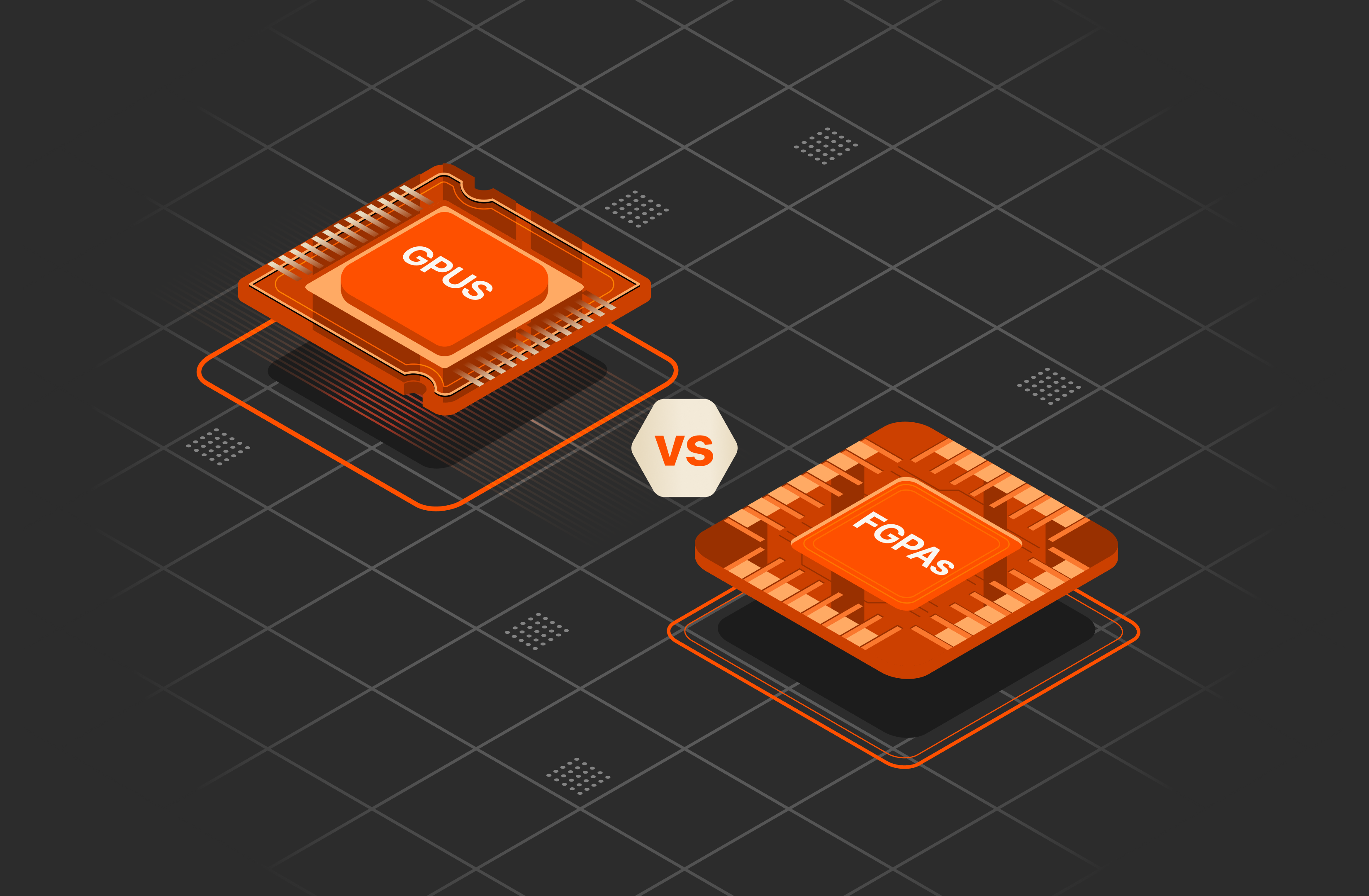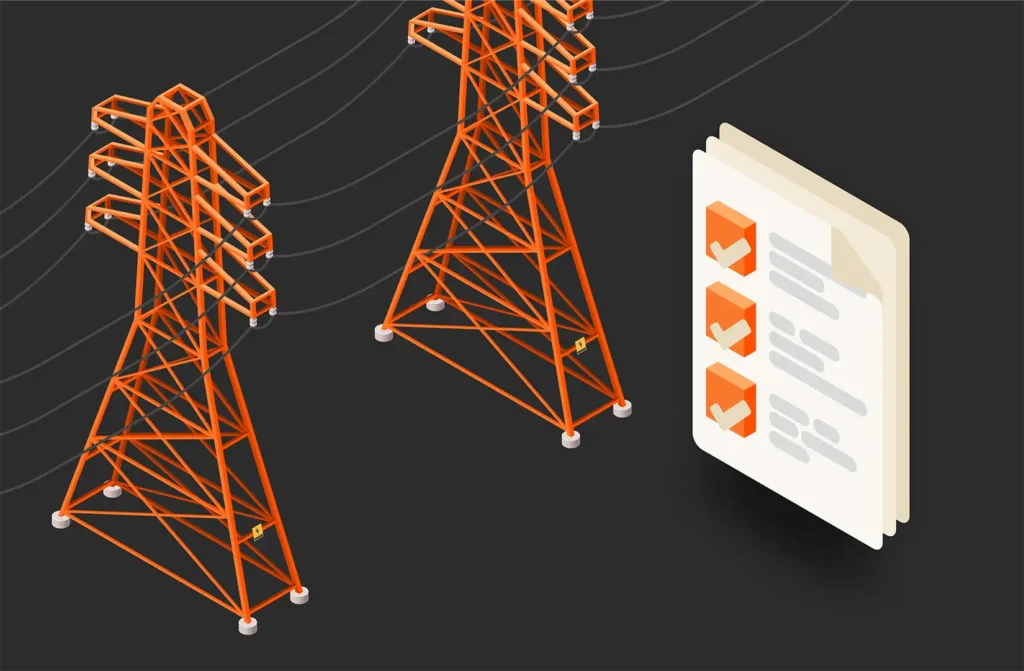Graphics processing units (GPUs) and field programmable gate arrays (FPGAs) are two of the three main processor types for imaging and other heavy calculations. Central processing units (CPUs) are the third type. Let’s dig into GPUs vs FPGAs: their advantages, common use cases, and when to choose one over the other.
What Is an FPGA?
An FPGA (field programmable gate array) is an integrated circuit with a programmable hardware fabric that allows it to be reconfigured to behave like another circuit. Because its circuitry is not hard-etched, it can flexibly be adapted to a specific machine learning algorithm’s needs.In the context of AI, this provides huge advantages in the ability of an FPGA to both support massively parallel workloads and boost the performance of a particular algorithm.
Choosing between GPUs vs FPGAs
The main difference between GPUs and FPGAs, is that GPUs were originally designed to render video and graphics. Their ability to handle workloads in parallel made them popular for deep learning applications for situations where the same workload needs to be performed many times at speed. And when it comes to image recognition tasks, GPUs are a natural choice.
FPGAs, on the other hand have the flexibility to be programmed to function as a GPU, ASIC, or other configuration.y can be programmed and optimized for specific algorithms, making them highly efficient in scenarios where general-purpose hardware might not be sufficient.
GPU Advantages: Unleashing the Power of Parallel Processing
Graphics Processing Units (GPUs) stand out for their versatility and efficiency, especially in video-related tasks. As we delve deeper into their capabilities, it’s crucial to segment their strengths and limitations, especially when juxtaposed with emerging technologies like FPGAs.
Graphical processing
The greatest strength of GPUs is their ability to render graphics. From rendering high resolution images and animations to handling the complex calculations behind ray tracing, they are perfect for interfacing with displays and handling the computations needed to render scenes with high resolutions and detailed textures.
Parallel Processing
GPUs consist of multiple cores, each capable of executing thousands of mathematical operations simultaneously. This parallel architecture allows GPUs to tackle complex mathematical computations, such as matrix multiplications, Fourier transforms, and other linear algebra operations, much faster than CPUs.
Widespread Availability and Ease of Use
GPUs are widely available on the market. From gaming to cryptomining to 3D modeling, consumers have no shortage of options to choose from. Unlike FPGAs, which often require specific configurations and can be challenging to program, many GPUs on the market come pre configured and ready to go. This user-friendly nature makes them accessible to a wide range of users and companies, ensuring they remain a popular choice in the tech industry.
FPGA Advantages: Tapping Into the Potential of Custom Hardware Acceleration
FPGAs are emerging as a powerful alternative to GPUs in the realm of artificial intelligence and high-performance computing.
Customizability
The biggest advantage of FPGAs is their programmability. Unlike GPUs which have a fixed design, FPGAs can be reprogrammed to implement custom logic and functionality. This programmability empowers developers to adapt the hardware to meet the specific requirements of their applications.
The ability to change the internal circuitry of FPGAs makes them an excellent choice for prototyping and development. Engineers can iterate quickly, testing different hardware configurations until they find the most efficient solution for their problem.
GPUs vs FPGAs 101: Lower latencies and reduced power consumption
FPGAs often outshine GPUs in terms of latency and power usage, especially when fine-tuned for certain tasks. Developers can implement custom hardware accelerators tailored to specific tasks that may not be well-suited for the fixed architectures of GPUs. This allows FPGAs to offer a high degree of flexibility for fine-tuning hardware design to maximize efficiency. The caveat of course is graphics processing, where a high performance dedicated GPU will have better performance and power consumption.
Common FPGA Use Cases
These are the most common FPGA use cases:
Accelerating high-performance computing (HPCs)
Custom hardware acceleration means FPGAs are perfect for serving as programmable accelerators for inference in HPC clusters, which are great for training deep learning neural networks.
Real-time Signal Processing
FPGAs are very well-suited to applications that require low-latency and real-time signal processing, such as digital signal processing, radar systems, software-defined radios, and telecommunications.
Network Optimization
FPGAs are ideal for offloading computationally intensive tasks, such as packet processing, encryption, and compression, from CPUs, reducing latency and increasing network throughput.
High-frequency Trading
In trading, microseconds can be the difference between making millions of dollars and losing millions of dollars. High-frequency trading bots use FPGAs to implement custom algorithms that execute trades with minimum latency, providing a competitive advantage.
Aerospace and Defense Applications
FPGAs are highly useful and beneficial in aerospace and defense systems, which use custom hardware accelerators for image and signal processing, encryption, and sensor data processing.
Common GPU Use Cases
In addition to the aforementioned video processing, these are the main GPU use cases:
Machine Learning and Deep Learning
The popularity of artificial intelligence owes much to the exceptional processing power of GPUs. Training deep neural networks involves numerous matrix multiplications and activations, which GPUs handle with remarkable efficiency, significantly reducing training times.
Cryptocurrency Mining
The mining of cryptocurrencies like Bitcoin and Ethereum involves computationally intensive cryptographic operations, which GPUs can efficiently handle. GPU-based mining rigs have become a standard in the cryptocurrency mining community due to their superior processing capabilities.
What Will Blockchain Mean for Data Storage?
Typical High-performance Computing Applications
Scientific simulations, weather forecasting, and fluid dynamics simulations often require substantial computational power. GPUs provide the necessary horsepower to accelerate these simulations and improve time to results significantly.
Can You Use an FPGA as a GPU?
Yes, it’s possible to use an FPGA as a GPU, but there are some important considerations and challenges involved.
To use an FPGA as a GPU, you would need to design and implement a hardware architecture that emulates or replicates the functionality of a GPU. This requires significant expertise in FPGA design, as well as an in-depth understanding of GPU architecture and parallel processing techniques.
Also, keep in mind that while FPGAs can be highly efficient for specific tasks, they may not match the raw compute power and performance of modern GPUs, especially for graphics-intensive applications.
FPGAs can also be power-hungry, and the power consumption of an FPGA-based GPU solution may not be as favorable as using dedicated GPUs.
So, while it’s technically feasible to use an FPGA as a GPU, in practice, most applications that require GPU-level performance prefer dedicated GPUs due to their mature ecosystem, ease of programming, and widespread availability of libraries and frameworks optimized for GPUs. However, FPGAs can still offer significant advantages in certain specialized applications, particularly when power efficiency or customizability is a priority.
Conclusion on GPUs vs FPGAs
Choosing between GPUs and FPGAs is an important decision that depends on the nature of the application, performance requirements, power constraints, and budget considerations. GPUs offer broad applicability and cost-effectiveness, making them a popular choice for many high-performance computing tasks. On the other hand, FPGAs provide a highly customizable and power-efficient solution for specific applications that demand hardware acceleration and real-time processing. Understanding the unique strengths and weaknesses of both GPUs and FPGAs is essential for making an informed decision and unlocking the full potential of accelerated computing in the modern computing landscape.
Looking for a storage solution with the power and scalability needed to keep up with AI? Check out AIRI//S™—modern AI-ready infrastructure by Pure Storage.

Real-world Organizations Gaining ROI from AI

Written By:
Pure in Byte-sized Form
Check out our show “Digital Bytes” where our experts educate you on Pure and its products and services.






